Abstract
A 26 year old man is described with life-long orthostatic hypotension unrelated to autonomic nerve degeneration and apparently due to failure of peripheral noradrenaline realese. Tests of parasympathetic and sympathetic cholinergic nerve function were normal, but sympathetic adrenergic activity was defective. Thus blood pressure regulation was abnoraml. There was no pressor response to tyramine, an indirect sympathomimetic drug, but a marked pressor response to the directly acting sympathomimetic drugs phenylephrine and noradrenaline. On standing there was a progressive fall rather than a rise in circulating noradrenaline concentrations, although adrenaline levels rose normally. The pupils showed diminished responses to ephedrine and cocaine, and a normal response to phenylephrine. Fluorescence microscopy of blood bessels showed that they were innervated with adrenergic nerves. His orthostatic hypotenstion responded well to oral phenylephrine (50 mg five times daily) but not to other forms of therapy. It is suggested that this patient's symptoms were due to failure of noradrenaline release even though sympathetic adrenergic nerves were present. We therfore wish to draw attention to a further cause of orthostatic hypotension, failure of peripheral noradrenaline release without autonomic neuropathy.
Full text
PDF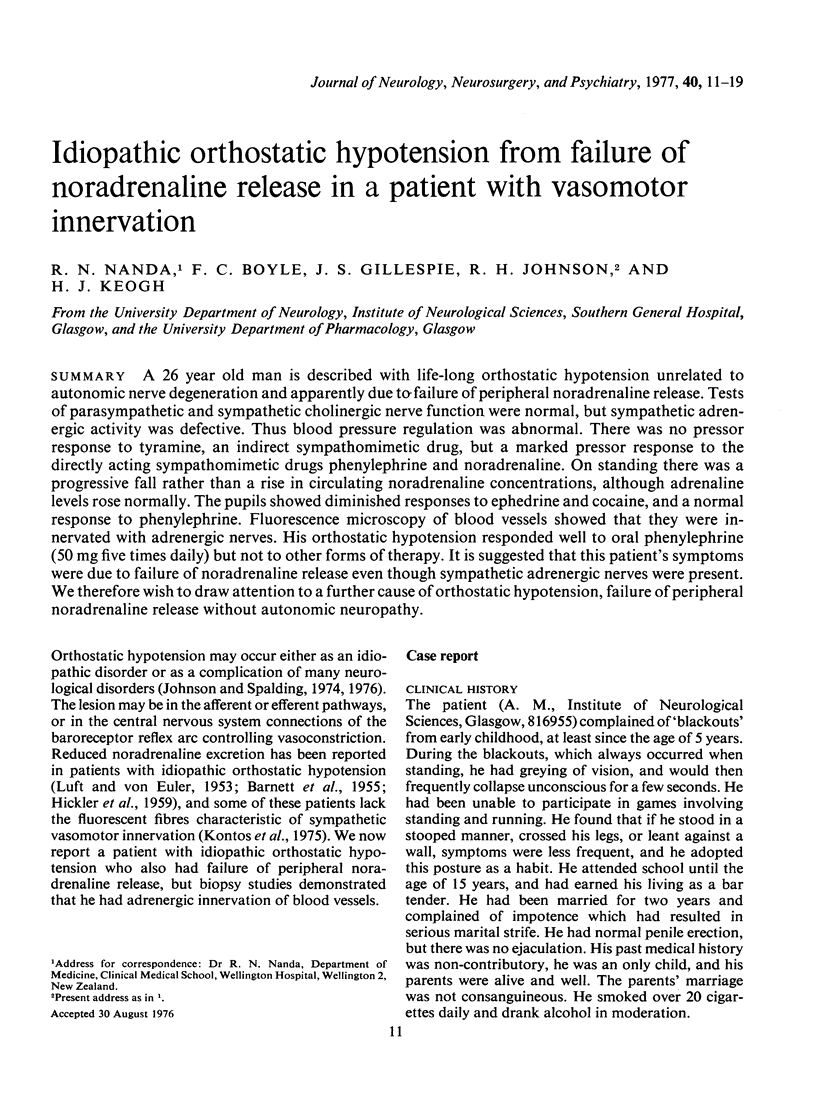
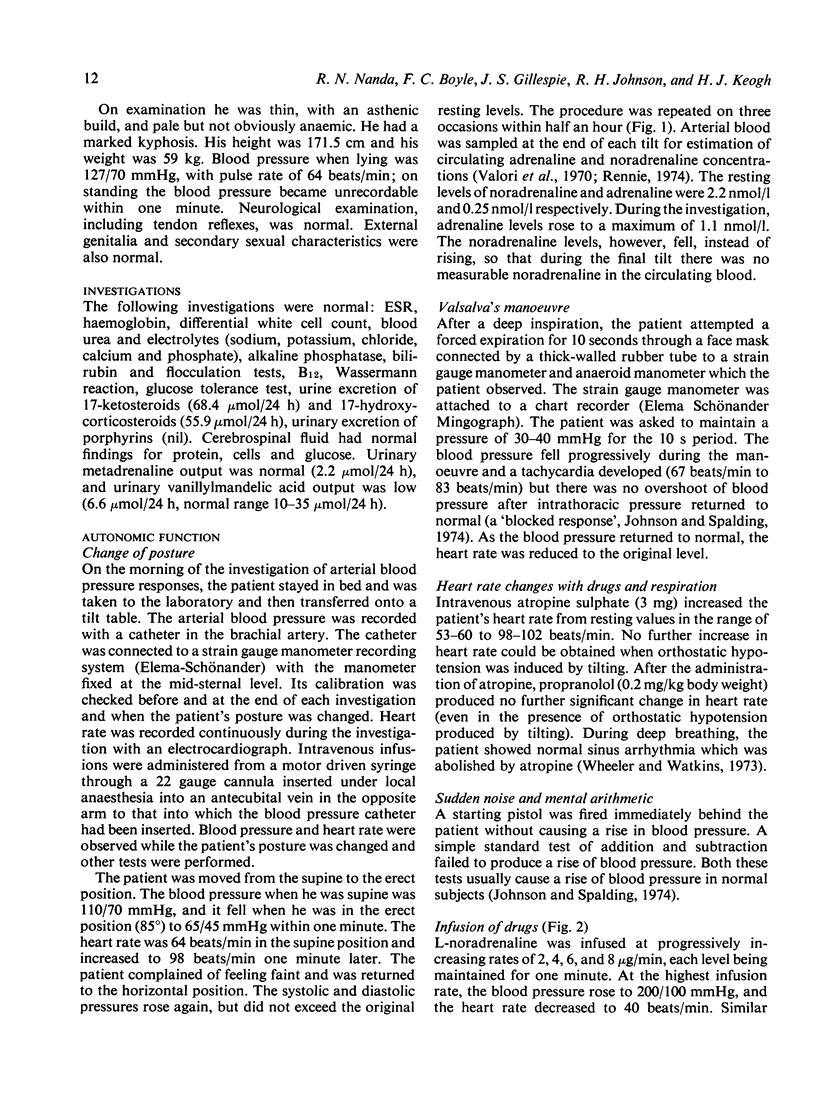
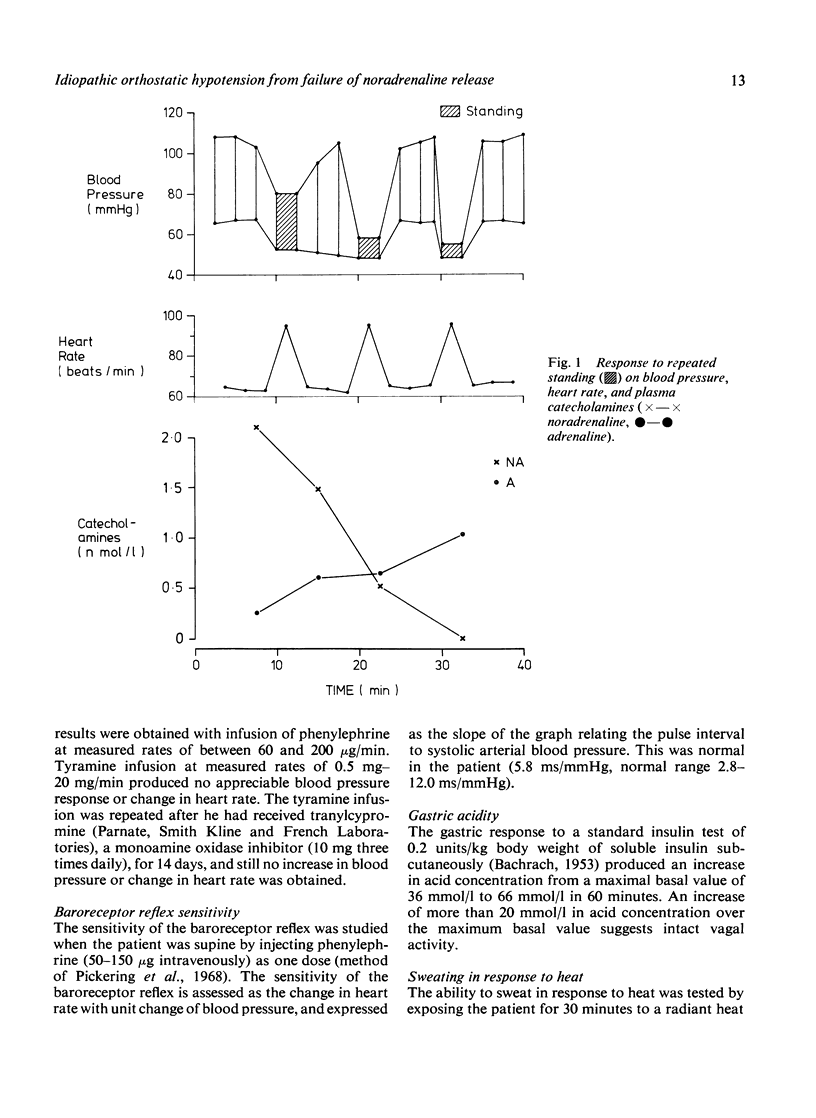
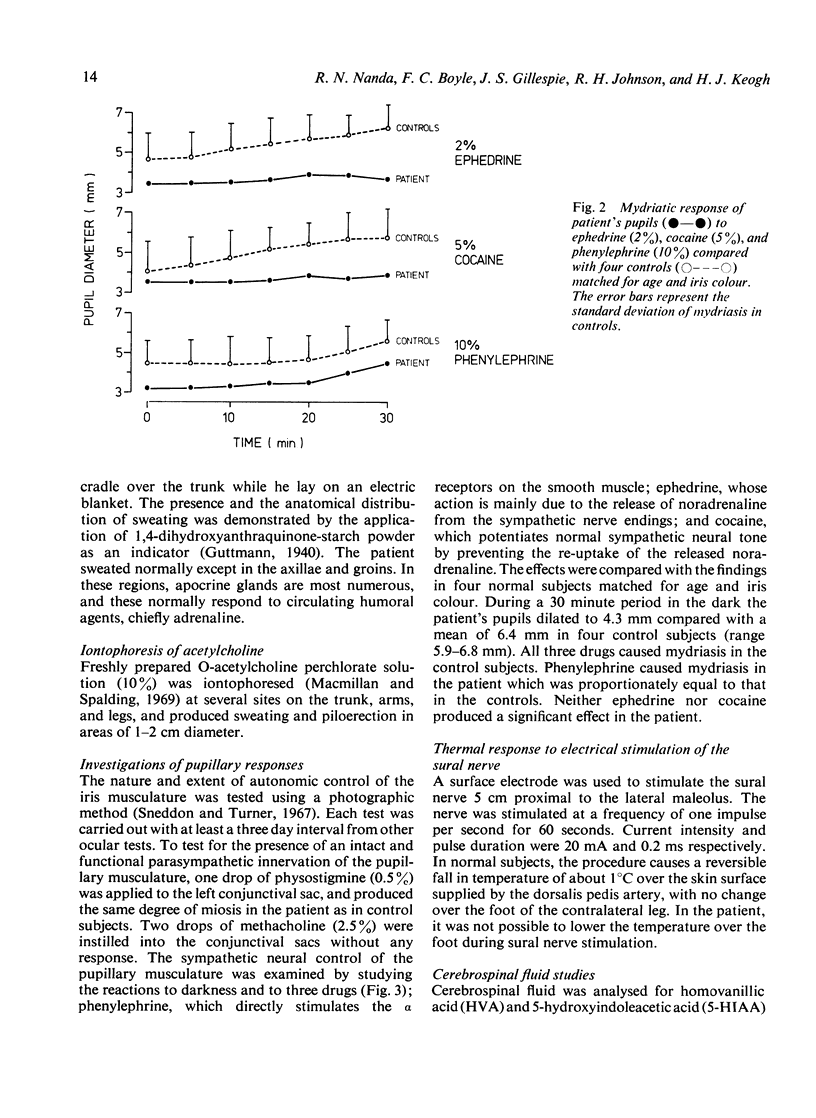
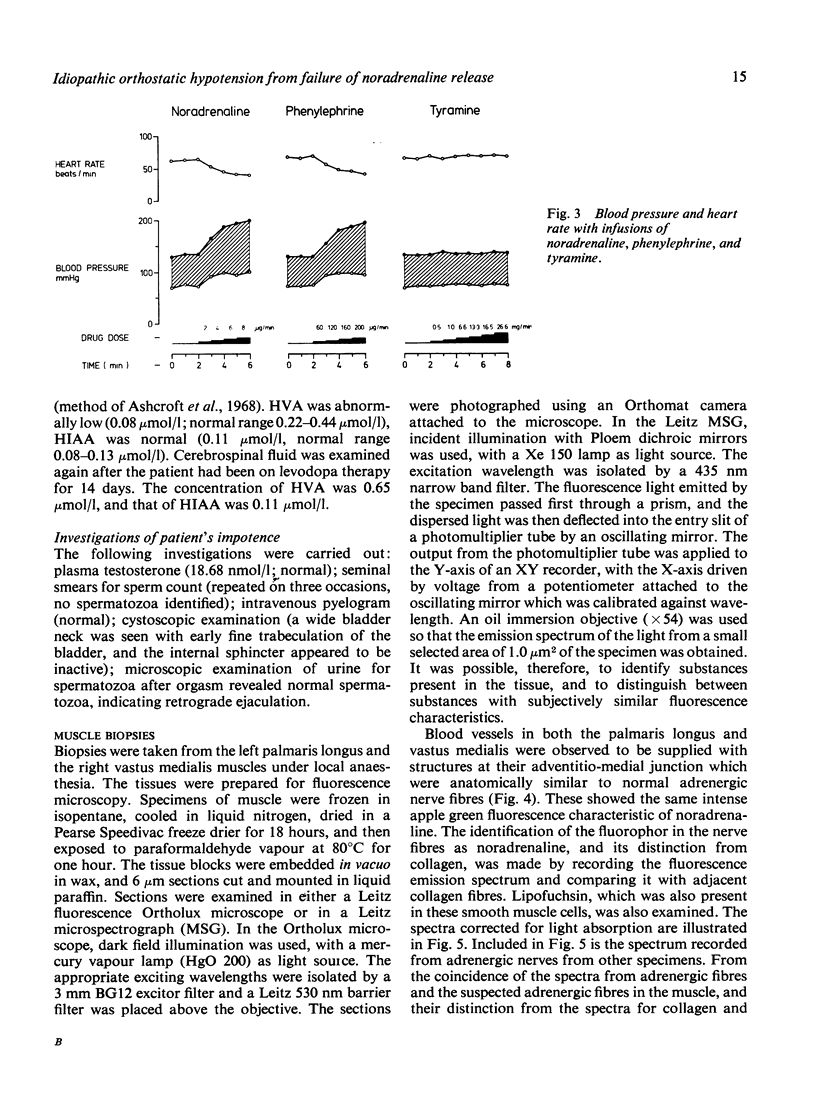
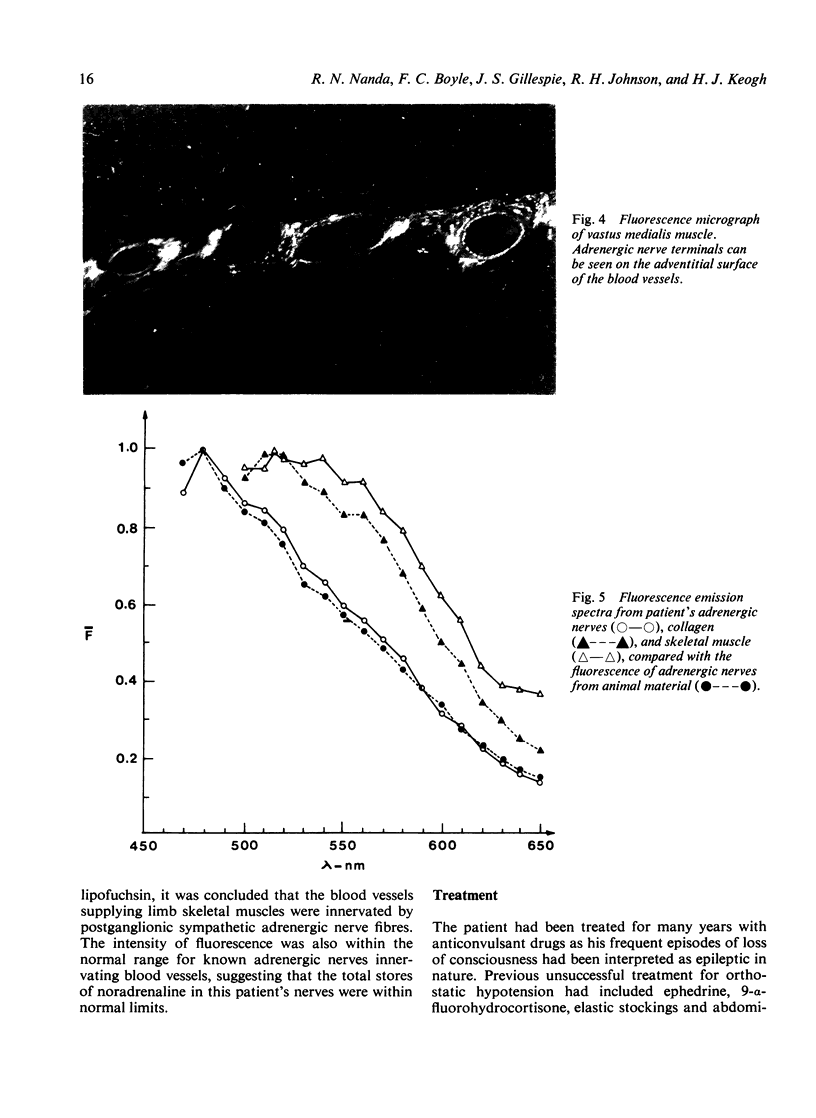
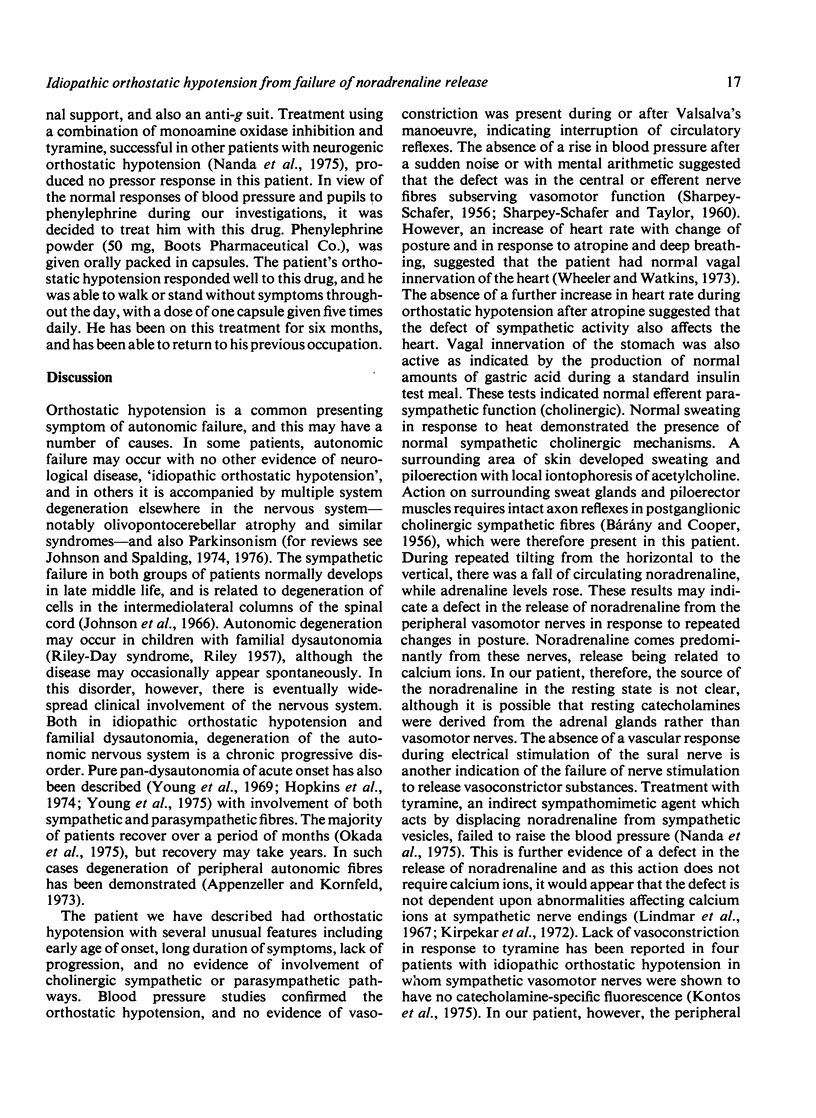
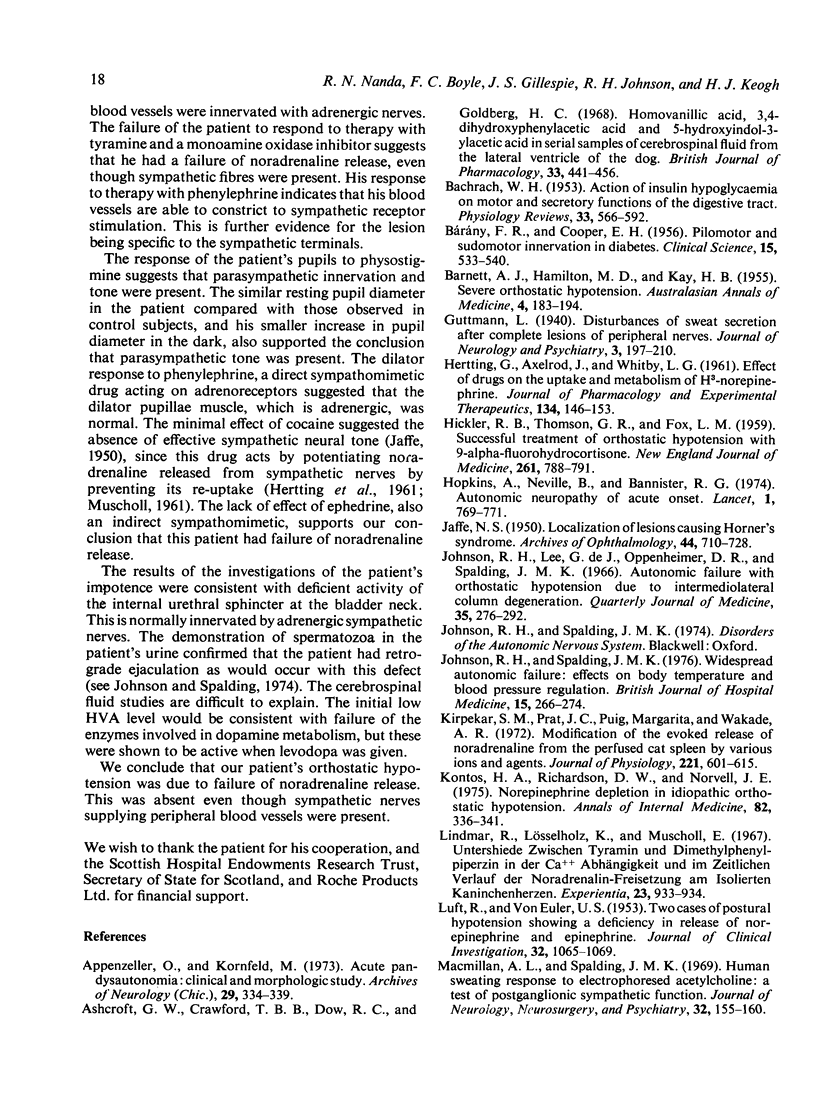
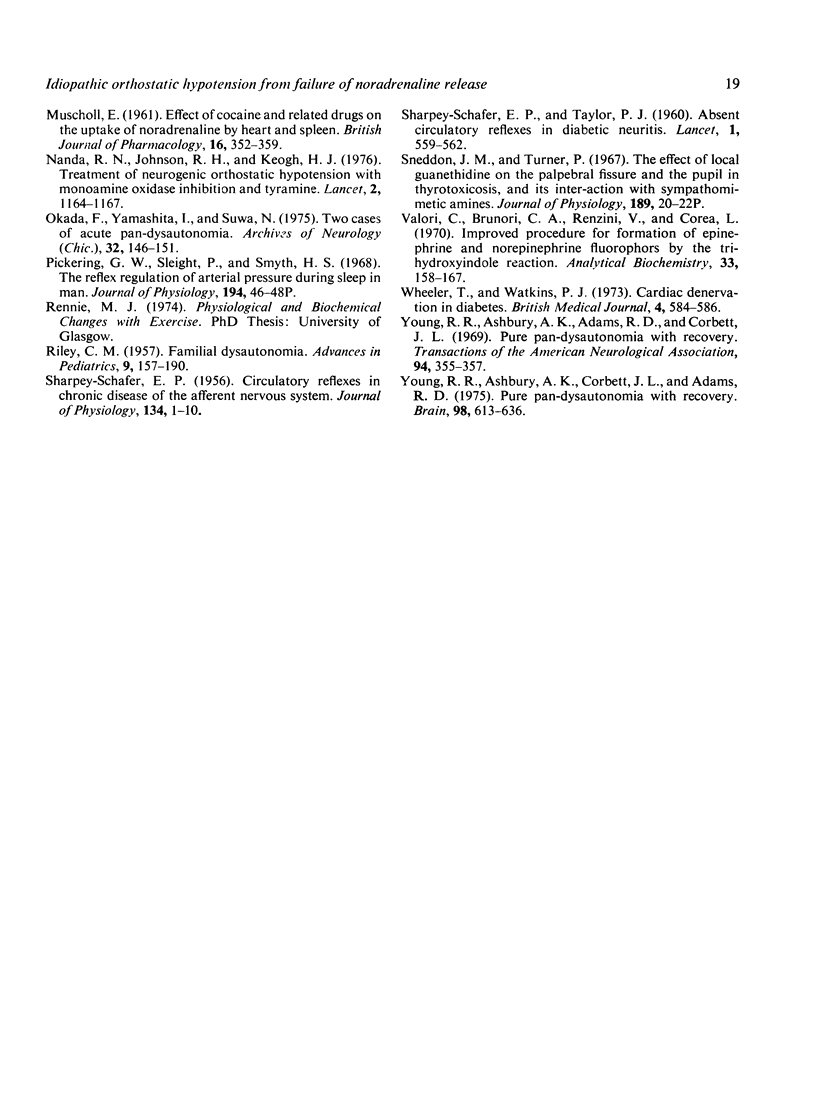
Images in this article
Selected References
These references are in PubMed. This may not be the complete list of references from this article.
- Appenzeller O., Kornfeld M. Acute pandysautonomia. Clinical and morphologic study. Arch Neurol. 1973 Nov;29(5):334–339. doi: 10.1001/archneur.1973.00490290074010. [DOI] [PubMed] [Google Scholar]
- Ashcroft G. W., Crawford T. B., Dow R. C., Guldberg H. C. Homovanillic acid, 3,4-dihydroxyphenylacetic acid and 5-hydroxyindol-3-ylacetic acid in serial samples of cerebrospinal fluid from the lateral ventricle of the dog. Br J Pharmacol Chemother. 1968 Jul;33(3):441–456. doi: 10.1111/j.1476-5381.1968.tb00493.x. [DOI] [PMC free article] [PubMed] [Google Scholar]
- BACHRACH W. H. Action of insulin hypoglycemia on motor and secretory functions of the digestive tract. Physiol Rev. 1953 Oct;33(4):566–592. doi: 10.1152/physrev.1953.33.4.566. [DOI] [PubMed] [Google Scholar]
- BARANY F. R., COOPER E. H. Pilomotor and sudomotor innervation in diabetes. Clin Sci. 1956 Nov;15(4):533–540. [PubMed] [Google Scholar]
- BARNETT A. J., HAMILTON M. D., KAY H. B. Severe orthostatic hypotension. Australas Ann Med. 1955 Aug;4(3):183–194. doi: 10.1111/imj.1955.4.3.183. [DOI] [PubMed] [Google Scholar]
- HERTING G., AXELROD J., WHITBY L. G. Effect of drugs on the uptake and metabolism of H3-norepinephrine. J Pharmacol Exp Ther. 1961 Nov;134:146–153. [PubMed] [Google Scholar]
- HICKLER R. B., THOMPSON G. R., FOX L. M., HAMLIN J. T., 3rd Successful treatment of orthostatic hypotension with 9-alpha-fluorohydrocortisone. N Engl J Med. 1959 Oct 15;261:788–791. doi: 10.1056/NEJM195910152611604. [DOI] [PubMed] [Google Scholar]
- Hopkins A., Neville B., Bannister R. Autonomic neuropathy of acute onset. Lancet. 1974 Apr 27;1(7861):769–771. doi: 10.1016/s0140-6736(74)92840-2. [DOI] [PubMed] [Google Scholar]
- JAFFE N. S. Localization of lesions causing Horner's syndrome. AMA Arch Ophthalmol. 1950 Nov;44(5):710–728. doi: 10.1001/archopht.1950.00910020722009. [DOI] [PubMed] [Google Scholar]
- Johnson R. H., Lee G. de J., Oppenheimer D. R., Spalding J. M. Autonomic failure with orthostatic hypotension due to intermediolateral column degeneration. A report of two cases with autopsies. Q J Med. 1966 Apr;35(138):276–292. [PubMed] [Google Scholar]
- Kirpekar S. M., Prat J. C., Puig M., Wakade A. R. Modification of the evoked release of noradrenaline from the perfused cat spleen by various ions and agents. J Physiol. 1972 Mar;221(3):601–615. doi: 10.1113/jphysiol.1972.sp009770. [DOI] [PMC free article] [PubMed] [Google Scholar]
- Kontos H. A., Richardson D. W., Norvell J. E. Norepinephrine depletion in idiopathic orthostatic hypotension. Ann Intern Med. 1975 Mar;82(3):336–341. doi: 10.7326/0003-4819-82-3-336. [DOI] [PubMed] [Google Scholar]
- LUFT R., VON EULER U. S. Two cases of postural hypotension showing a deficiency in release of nor-epinephrine and epinephrine. J Clin Invest. 1953 Nov;32(11):1065–1069. doi: 10.1172/JCI102828. [DOI] [PMC free article] [PubMed] [Google Scholar]
- Lindmar R., Löffelholz K., Muscholl E. Unterschiede zwischen Tyramin und Dimethylphenylpiperzin in der Ca-Abhangigkeit und im zeitlichen Verlauf der Noradrenalin-Freisetzung am isolierten Kaninchenherzen. Experientia. 1967 Nov 15;23(11):933–934. doi: 10.1007/BF02136230. [DOI] [PubMed] [Google Scholar]
- MUSCHOLL E. Effect of cocaine and related drugs on the uptake of noradrenaline by heart and spleen. Br J Pharmacol Chemother. 1961 Jun;16:352–359. doi: 10.1111/j.1476-5381.1961.tb01095.x. [DOI] [PMC free article] [PubMed] [Google Scholar]
- Macmillan A. L., Spalding J. M. Human sweating response to electrophoresed acetylcholine: a test of postganglionic sympathetic function. J Neurol Neurosurg Psychiatry. 1969 Apr;32(2):155–160. doi: 10.1136/jnnp.32.2.155. [DOI] [PMC free article] [PubMed] [Google Scholar]
- Nanda R. N., Johnson R. H., Keogh H. J. Treatment of neurogenic orthostatic hypotension with a monoamine oxidase inhibitor and tyramine. Lancet. 1976 Nov 27;2(7996):1164–1167. doi: 10.1016/s0140-6736(76)91681-0. [DOI] [PubMed] [Google Scholar]
- Pickering G. W., Sleight P., Smyth H. S. The reflex regulation of arterial pressure during sleep in man. J Physiol. 1968 Jan;194(1):46P–48P. [PubMed] [Google Scholar]
- RILEY C. M. Familial dysautonomia. Adv Pediatr. 1957;9:157–190. [PubMed] [Google Scholar]
- SHARPEY-SCHAFER E. P. Circulatory reflexes in chronic disease of the afferent nervous system. J Physiol. 1956 Oct 29;134(1):1–10. doi: 10.1113/jphysiol.1956.sp005621. [DOI] [PMC free article] [PubMed] [Google Scholar]
- SHARPEY-SCHAFER E. P., TAYLOR P. J. Absent circulatory reflexes in diabetic neuritis. Lancet. 1960 Mar 12;1(7124):559–562. doi: 10.1016/s0140-6736(60)92773-2. [DOI] [PubMed] [Google Scholar]
- Valori C., Brunori C. A., Renzini V., Corea L. Improved procedure for formation of epinephrine and norepinephrine fluorophors by the trihydroxyindole reaction. Anal Biochem. 1970 Jan;33(1):158–167. doi: 10.1016/0003-2697(70)90449-5. [DOI] [PubMed] [Google Scholar]
- Wheeler T., Watkins P. J. Cardiac denervation in diabetes. Br Med J. 1973 Dec 8;4(5892):584–586. doi: 10.1136/bmj.4.5892.584. [DOI] [PMC free article] [PubMed] [Google Scholar]
- Young R. R., Asbury A. K., Adams R. D., Corbett J. L. Pure pan-dysautonomia with recovery. Trans Am Neurol Assoc. 1969;94:355–357. [PubMed] [Google Scholar]
- Young R. R., Asbury A. K., Corbett J. L., Adams R. D. Pure pan-dysautonomia with recovery. Description and discussion of diagnostic criteria. Brain. 1975 Dec;98(4):613–636. doi: 10.1093/brain/98.4.613. [DOI] [PubMed] [Google Scholar]



